
Tai Chi Week
Monday 28th – Friday 1st August 2025
Feng Shou Kung Fu Week
Monday 4th August to Friday 8th August 2025
Anmo Health And Massage Week
Monday 11th to Friday 15th August 2025


Have a go at our daily training playlists

Beginner Level I and II: If you’re just starting out, we’ve got playlists that’ll gently introduce you to the basics. The movements and deep breathing techniques are pretty cool.
Now, here’s where it gets interesting – the video options. You can choose what suits you best:
4K 360° Videos: These are like a virtual reality experience. You can look around and see things from different angles. It’s pretty immersive and adds a whole new dimension to the practice.
HD Videos: If your internet isn’t the best, try these high-quality HD videos. No buffering issues, and you can still get the benefits.
Short 30-Minute Playlists: For those hectic days when you’re short on time, We’ve got quick 30-minute playlists. It’s like an energy boost you can fit into your busy schedule.
But, wait, there’s more! We’ve got longer playlists that run for 45 to 60 minutes. These are a bit more in-depth and include:
Warming Up: We start with warm-up exercises to get you all loosened up. It’s like a gentle introduction to what’s coming.
Daoyin Deep Breathing: You know, deep breathing to activate your primary energy center in your lower abdomen. We call it the Dantian. It’s all about getting that energy flowing.
Kai Men Qigong: This is all about opening up the meridians to let the energy flow through your body. It’s like flicking the switch to turn on the lights.
Tai Chi Dance Loops: Graceful movements that enhance your balance and focus. We’ve got different sequences, from 1-10 to 1-20 moves.
Tai Chi Form: This part’s more meditative, and it’s all about finding that inner harmony.
Five Lotus Blossoms Qi Cutoff Exercise: We wrap it up with this exercise to bring your energy back to your center. It’s like charging up for later.
Now, here’s the kicker – subscribing to our YouTube channel. It’s a great idea if you want to keep up with the latest uploads. You’ll be part of a little community of like-minded folks, and it’s a cool way to make sure you don’t miss a single session.
So, let’s get to the really cool part. Awakening your Qi – that’s like your life energy, you know? It’s like how the Lotus flower opens up in the morning. Your energy can do the same thing every day.
Qi flows best when your body is relaxed, which totally makes sense. You start off with loosening up – it’s like a little wake-up call for your body. Then there’s this deep breathing thing called Daoyin. It activates your primary energy center in your lower abdomen, the Dantian. It’s like giving your car the ignition key.
Then, there’s this Kai Men Qigong thing. It’s like opening the door for energy to flow. It’s pretty fascinating.
Next, you get to the Tai Chi dance loops, which are all about grace and flow. It’s like a dance with a deeper purpose.
Then, there’s the meditative Tai Chi form. It’s like a moving meditation. You can get lost in it, in a good way.
Towards the end, we do this Five Lotus Blossoms Qi cutoff exercise. It’s like putting your energy in a storage box for when you need it.
It’s a daily energy boost. Your body feels alive, and your mind feels clear. It’s like this little secret that not many people know about. And the best part? It’s not just a one-time thing. With regular practice, you see a gradual transformation.
Your energy levels grow, your awareness sharpens, and you’ve got this newfound control over your own energy. It’s like having a superpower that’s always there when you need it.
This whole thing draws from ancient Taoist energy training methods. It’s like this timeless wisdom, and it’s available to anyone who’s curious.
So, you really don’t have to wait. You can start this transformation today and take it to a whole new level. You’re going to love how this makes you feel – more alive and in control of your energy. It’s like a little daily gift to yourself.
So, don’t just take my word for it. Dive into these Tai Chi and Qigong practices and experience the daily awakening of your Qi. The YouTube playlists are like the gateway to a more vibrant and balanced life. Subscribe, stay in the loop, and let’s do this together. You’ll be amazed at the difference it makes.
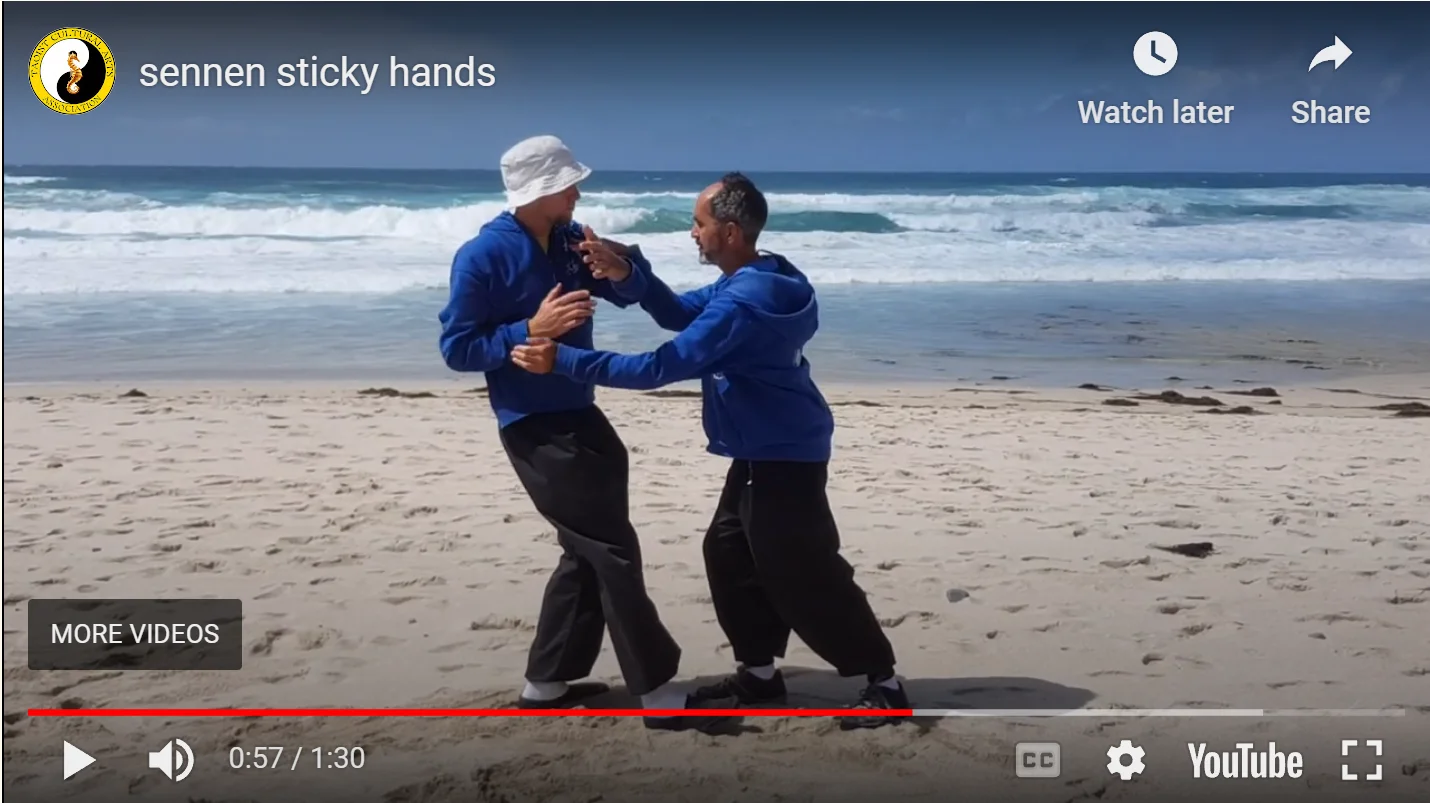
Sticky Hands, also known as Yīfù shǒu (依附手) is a fundamental exercise in Lee Style Tai Chi that is taught to beginners as a way to introduce them to the principles of Tai Chi and to prepare them for more advanced techniques. While some may see Sticky Hands as a simple exercise, it is actually a complex and multifaceted practice that offers a range of benefits for practitioners.
One of the main aspects of Sticky Hands is the cultivation of sensitivity and connection with one’s partner. In the exercise, two practitioners stand facing each other and place their hands on each other’s forearms. They then begin to move their arms and bodies in unison, following each other’s movements and trying to maintain a constant connection. This requires a high level of sensitivity to the partner’s movements and intentions and helps to develop the ability to read and respond to subtle changes in body position and energy.
Another aspect of Sticky Hands is the development of internal energy or qi. By maintaining a constant connection with their partner, practitioners learn to circulate their energy and to use it to guide and control their partner’s movements. This involves the use of spiraling movements, which help to increase the flow of energy through the body and to connect the upper and lower body.
Sticky Hands also emphasizes the importance of timing and rhythm in Tai Chi. Practitioners must learn to move in sync with their partner, to maintain a constant flow of movement, and to execute techniques at the right moment. This requires a high level of concentration and focus, and helps to develop a sense of timing and rhythm that can be applied to other aspects of Tai Chi practice.
In addition to these physical aspects, Sticky Hands also has a number of mental and emotional benefits. The exercise requires practitioners to be present and focused, to let go of distracting thoughts and emotions, and to remain calm and centered even in the face of challenge or resistance from their partner. This level of mindfulness and emotional control can be applied to many different aspects of life, including work, relationships, and personal growth.
Overall, Sticky Hands is a foundational practice in Lee Style Tai Chi that offers a range of benefits for both beginners and more advanced practitioners. By developing sensitivity, connection, internal energy, timing, and emotional control, practitioners can gain a deeper understanding of themselves and their interactions with others, both in the context of Tai Chi and in daily life. As such, it is an essential part of a holistic Tai Chi practice that emphasizes both solo and partner work as equally important in line with the Taoist principle of yin-yang balance.
Sticky Hands is an essential part of Tai Chi practice. It can help you develop sensitivity, awareness, and adaptability. By practicing sticky hands, you can improve your Tai Chi practice in the following ways:
While Tai Chi is a serious practice, it doesn’t have to be boring. In fact, Tai Chi can be quite humorous, especially when practicing sticky hands with a partner. Here are a few examples of the humour that can be found in sticky hands:
In conclusion, Sticky Hands is an essential part of Tai Chi practice. By practicing Sticky Hands, you can develop sensitivity, awareness, and adaptability. It can also help you improve your balance, flexibility, and reduce stress. And let’s not forget the humour that can be found in practicing sticky hands with a partner. So, if you’re looking to improve your Tai Chi practice and add a bit of laughter to your life, give sticky hands a try. Who knows, you might just find yourself hooked on Tai Chi for life!
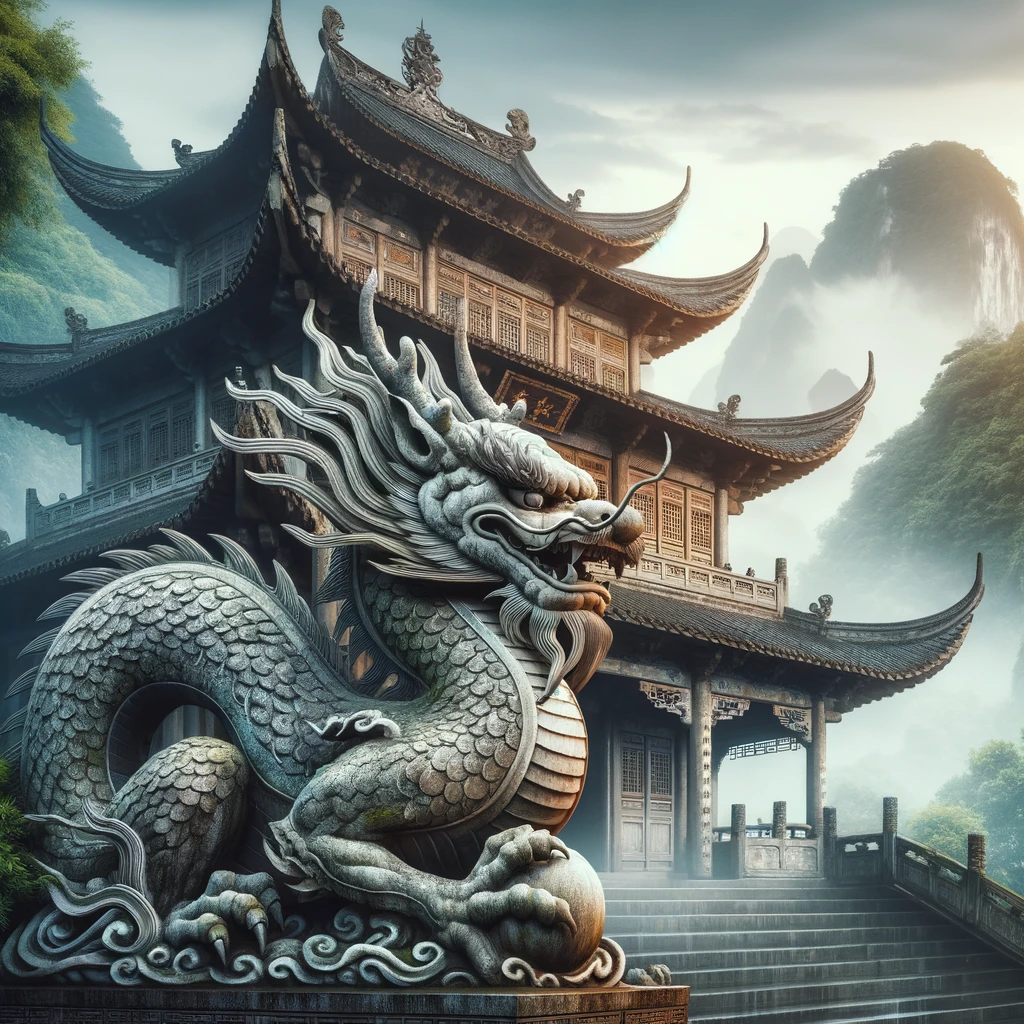

The Coventry Club will be hosting a weekend course this month to welcome in the Chinese New Year of the Dragon, everyone is welcome.
The course is a Tai Chi and Tai Chi weapons course on 10th-11th February at the Dance Studio in Caludon Castle Sports Centre, and we will be going out on the Saturday night for a Chinese meal so if you’re interested in attending please get in touch so we can get an idea of numbers.
Chinese New Year, also known as the Spring Festival, marks the beginning of the lunar new year and is the most important traditional festival in Chinese culture. Celebrated for over 4,000 years, it’s a time of reunion, renewal, and hope. Central to the festivities are the Chinese Zodiac animals, which cycle through a 12-year period, each year associated with a specific animal. Among these, the Dragon stands out as the most auspicious and powerful symbol.
Unlike its Western counterpart, often depicted as a fearsome and malevolent creature, the Chinese Dragon is seen as a benevolent and potent symbol, embodying strength, wealth, and good fortune. It is the only mythical creature in the Chinese Zodiac, which underscores its unique significance. The Dragon year is particularly special, believed to bring innovation, growth, and auspicious beginnings.
The Dragon’s role in Chinese New Year celebrations is multifaceted. It includes being a favored theme for decorations, performances, and art, reflecting its deep-rooted symbolism in Chinese tradition. The Dragon Dance, a highlight of the festival, showcases the creature’s supposed power to ward off evil spirits and bring good luck. This performance, involving a team of dancers manipulating a long, sinuous dragon figure, is a mesmerizing spectacle, embodying the spirit of renewal and community unity.
In this context, the Dragon transcends its mythological origins, becoming a symbol of the collective hopes and aspirations of the people. It represents the strength and resilience of the human spirit, the pursuit of excellence, and the desire for a prosperous year ahead. As we delve deeper into the symbolism of the Dragon and its impact on Chinese culture, we uncover layers of meaning that reflect the complexity and richness of this ancient civilization.
In traditional Chinese art, the Dragon is a frequent motif found in paintings, sculptures, and architectural elements. It is portrayed with great variability and nuance, often entwined amidst clouds or waves, embodying the forces of nature and the universe’s boundless energy. This depiction reflects the ancient Chinese belief in the Dragon as a bringer of rain, essential for agriculture, and by extension, a symbol of fertility and abundance. Artists have long been fascinated by the Dragon’s form and symbolism, leading to a rich tapestry of artwork that explores its dynamism and ethereal beauty.
Literature, too, is replete with references to Dragons, where they often embody heroism, wisdom, and the power to overcome obstacles. In tales and legends, Dragons are not merely creatures to be feared but entities that possess deep knowledge and understanding of the world. They are sometimes portrayed as guardians of sacred treasures or as spiritual guides, offering insights into the complexity of life and the path to enlightenment. This portrayal has inspired generations of writers and poets, who see in the Dragon a metaphor for the pursuit of knowledge and the creative spirit.
The influence of Dragon symbolism extends into modern Chinese creativity and design, where it continues to be a potent source of inspiration. In fashion, for instance, Dragon motifs adorn garments in a celebration of cultural heritage and artistic innovation. The Dragon’s form lends itself to endless reinterpretation, allowing designers to explore its symbolism in ways that resonate with contemporary aesthetics while paying homage to traditional values.
Architecture, too, has seen the Dragon’s influence in the design of buildings and public spaces. The Dragon’s sinuous shape and its association with water and the flow of energy align with the principles of Feng Shui, guiding the layout and aesthetics of structures to promote harmony and prosperity. Modern architectural projects may incorporate Dragon-inspired elements as a nod to cultural identity and a wish for success and good fortune.
The Dragon’s role in fostering creativity in Chinese culture is profound and multifaceted. It symbolizes not just the power of nature and the cosmos but also the limitless potential of human imagination. By exploring the Dragon’s presence in art, literature, and design, we gain insight into the cultural psyche of China—a civilization that venerates the past while continually innovating for the future. This reverence for the Dragon, a creature of myth, underscores a deeper truth: that myths, in their timeless appeal, inspire us to dream bigger, think more creatively, and reach for the extraordinary in our everyday lives.
The concept of Yin and Yang is fundamental to Chinese philosophy, representing the dual nature of existence where opposite forces are interconnected and interdependent in the natural world. The Dragon, in this context, is a powerful symbol of the harmonious balance between these forces, embodying the unity of strength and grace, power and wisdom, and the celestial and the earthly.
Yin and Yang are manifested in everything around us, from the changing seasons to the cycle of life and death. Yin is associated with qualities such as cold, passivity, and darkness, whereas Yang represents heat, activity, and light. Neither is superior to the other; instead, they are complementary, with each containing the seed of its opposite. This balance is crucial for harmony and stability in the universe, as well as in individual lives and societies.
The Dragon’s representation in Chinese culture captures this essence of balance and integration. It is often depicted amidst clouds or water, elements associated with fluidity, adaptability, and the unseen forces of the world, embodying Yin. Simultaneously, its legendary strength, its ability to soar to the heavens, and its association with the emperor and power reflect the qualities of Yang. Thus, the Dragon stands as a symbol of the unity and balance of Yin and Yang, encouraging a harmonious existence and the understanding that strength and gentleness can coexist.
Moreover, the Dragon’s depiction in art and mythology often includes elements of both masculine and feminine energy, further emphasizing the concept of balance. For instance, despite its powerful and often fearsome image, the Dragon is also associated with benevolence, intelligence, and the bringing of rain, essential for life and growth. This multifaceted nature highlights the complexity of the Dragon as a symbol, embodying the full spectrum of existence and the cyclical nature of life.
In festivals and celebrations, the Dragon’s role as a mediator between heaven and earth is celebrated, embodying the hope for balance and prosperity. The Dragon Dance, a quintessential part of Chinese New Year celebrations, is not just a vibrant display of culture and tradition but also a symbolic act of invoking the Dragon’s power to harmonize the forces of Yin and Yang in the community. Through its sinuous movements, the dance mimics the flow of energy in the universe, reminding spectators of the importance of balance and unity in fostering peace and prosperity.
The symbolism of the Dragon, intertwined with the principles of Yin and Yang, offers profound insights into Chinese philosophy and cultural values. It teaches the importance of recognizing and respecting the balance in all aspects of life, from the natural world to human relationships and personal well-being. By embodying the harmonious interplay of Yin and Yang, the Dragon serves as a powerful reminder of the beauty and strength that arises from unity and balance, guiding principles that continue to resonate deeply in Chinese culture and beyond.
Historically, the Dragon was emblematic of the Emperor’s divine right to rule. It was believed that the emperor was a direct descendant of the Dragon, possessing its strength, wisdom, and divine authority. This connection was visually represented in the imperial regalia, architecture, and art, where Dragons adorned robes, thrones, and palaces, signifying imperial power and legitimacy. The Dragon thus became a symbol of the state’s sovereignty and the emperor’s benevolent yet formidable rule.
In Chinese folklore, the Dragon is often portrayed as a protector of mankind and a bringer of prosperity. It is credited with having control over water, rainfall, typhoons, and floods. Farmers revered the Dragon for its ability to bring rain to water their crops, reflecting its role as a symbol of abundance and fertility. Dragon boats and Dragon dances, integral parts of many Chinese festivals, are rooted in traditions that honor the Dragon’s power to avert misfortune and bring good luck.
The Dragon’s symbolism extends to its representation of strength, courage, and resilience. It is often depicted fighting evil spirits or navigating the heavens, a testament to its role as a guardian against adversity. This imagery resonates with the Chinese people’s enduring spirit and their collective aspiration for harmony, prosperity, and protection from harm.
Moreover, the Dragon’s association with renewal and transformation highlights its importance in marking significant life events and transitions. Dragon motifs are common in weddings and other celebrations, symbolizing the wish for a blessed and prosperous life. The Dragon is not just a creature of power; it is a bearer of hope, embodying the possibilities of growth and renewal.
In the context of royal emblems, the Dragon’s image was meticulously regulated, with specific types and numbers of claws reserved for different ranks of nobility, underscoring the social hierarchy and the central role of the Dragon in imperial ideology. The use of Dragon imagery was a privilege of the highest order, reinforcing the sacredness and exclusivity associated with it.
The enduring fascination with the Dragon in Chinese culture reflects its versatility as a symbol, capable of embodying the highest ideals of power, prosperity, and protection. Its mythological origins have evolved into a rich tapestry of cultural significance, making the Dragon an indelible part of China’s national identity. Through festivals, folklore, and its use as a royal emblem, the Dragon continues to inspire awe and reverence, a testament to its timeless appeal and profound impact on Chinese civilization.
Tai Chi, a martial art known for its slow, flowing movements, incorporates the Dragon stance as one of its key positions. This stance, embodying the grace and power of the Dragon, emphasizes balance, flexibility, and inner strength. Practitioners of Tai Chi seek to emulate the Dragon’s fluid movements and its ability to seamlessly transition between force and gentleness. The Dragon stance, therefore, is not just a physical posture but a manifestation of the Dragon’s symbolic qualities of harmony, adaptability, and the integration of opposite forces.
The philosophical underpinnings of Tai Chi are deeply rooted in Taoism, which advocates for living in harmony with the Tao, or the fundamental nature of the universe. The Dragon’s symbolism is closely aligned with Taoist principles, representing the flow of Qi (vital energy) and the balance of Yin and Yang. In practicing the Dragon stance, Tai Chi practitioners engage with these Taoist concepts, aiming to achieve a state of mental calm and physical equilibrium that mirrors the natural order and fluidity of the universe.
Moreover, the Dragon’s association with water in Taoist philosophy highlights its significance in representing wisdom, depth, and adaptability. Water, like the Dragon, follows the path of least resistance yet possesses immense power to overcome obstacles. This analogy is central to Taoist teachings and is embodied in the practice of Tai Chi, where the goal is to cultivate an effortless strength and a responsive, adaptive approach to life’s challenges.
The Dragon also plays a role in Taoist meditative practices and philosophical teachings, serving as a symbol of enlightenment and transcendence. In meditation, the imagery of the Dragon can be used to focus the mind and harness internal energy. The Dragon’s ascent to the heavens is a metaphor for the spiritual journey toward understanding and the ultimate realization of one’s true nature. This imagery encourages individuals to seek balance and harmony within themselves and in their relationship with the world around them.
The influence of the Dragon on Tai Chi and Taoist philosophy is a testament to the creature’s enduring significance in Chinese thought and spirituality. It embodies the pursuit of balance, the integration of strength and flexibility, and the journey toward deeper understanding and harmony with the natural world. Through its symbolic presence in these practices, the Dragon continues to inspire and guide individuals in their quest for physical health, mental clarity, and spiritual growth, reflecting the profound and multifaceted role it plays in Chinese culture.
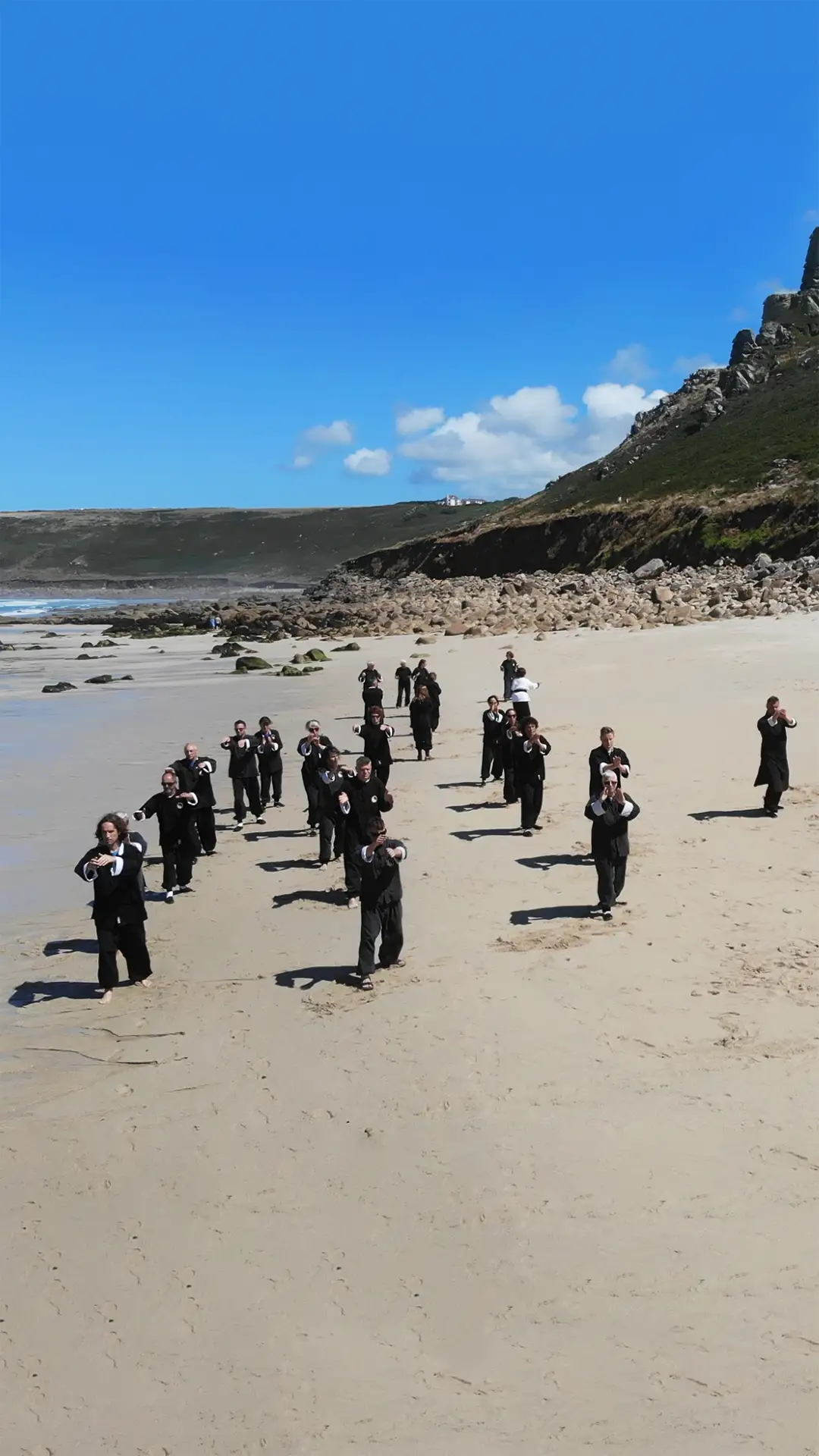

In our fast-paced world, maintaining a sharp and vibrant memory is a top priority for many. As we age, our cognitive abilities often experience a natural decline, leading to memory issues and other cognitive challenges. Tai Chi, an ancient Chinese martial art, offers a unique approach to enhancing memory and cognitive function. In this blog post, we will delve into the fascinating connection between Tai Chi and memory, exploring its roots in Chinese medicine and the flow of qi, as well as the concept of jing and its links to memory. We will also discuss a recent study that supports the benefits of Tai Chi for memory enhancement.
Tai Chi is deeply rooted in Chinese medicine, a holistic system of healthcare that dates back thousands of years. Central to the philosophy of Chinese medicine is the concept of qi, or life force. Qi flows through the body along energy pathways called meridians, and any disruption in this flow can lead to physical and mental imbalances.
Tai Chi, or “meditation in motion,” is designed to enhance the flow of qi throughout the body. The slow, graceful movements of Tai Chi help to unblock any energy stagnation, allowing for a smoother and more harmonious flow of qi. This, in turn, supports overall health, including cognitive function and memory.
Chinese medicine suggests that a balanced and abundant flow of qi contributes to optimal cognitive function. When the flow of qi is smooth and unrestricted, it nourishes the brain and improves its functioning. This nourishment is vital for memory retention and recall.
A study conducted by the University of Maryland Medical School, published in the Annals of Internal Medicine, examined the effects of Tai Chi on cognitive function and memory in adults. The study involved participants who practiced Tai Chi regularly over a period of 6 months. The results demonstrated significant improvements in memory and cognitive performance among the Tai Chi practitioners compared to the control group.
In addition to the concept of qi, Chinese medicine also places great importance on the notion of “jing,” which is often associated with the water element. Jing is considered the essence of life and is closely linked to memory and cognitive functions. In Chinese medicine, the kidneys are believed to be the storage reservoirs of jing, and their health is paramount for memory preservation.
The slow, flowing movements of Tai Chi are said to support the kidneys and maintain the balance of jing, ultimately contributing to improved memory and cognitive function. Just as water nourishes the earth, Tai Chi nourishes the kidneys, ensuring they continue to store and release jing effectively.
The study conducted by the University of Maryland Medical School supported the Chinese medicine principles of jing and the water element. The findings revealed that Tai Chi not only enhanced memory but also showed a positive impact on kidney function, indirectly linking it to the preservation of jing.
https://www.acpjournals.org/doi/10.7326/M23-1603
Tai Chi, deeply rooted in Chinese medicine, is a holistic practice that enhances the flow of qi and supports the balance of jing, the essence of life. This ancient art form has been shown to have a positive impact on memory and cognitive function, as demonstrated in the University of Maryland Medical School study. If you’re looking to sharpen your memory, improve cognitive function, and embrace a healthier lifestyle, Tai Chi may be the perfect solution. Join our Tai Chi society and experience the benefits for yourself. By engaging in this beautiful practice, you’ll not only connect with the wisdom of Chinese medicine but also nurture your body, mind, and memory for years to come.
The Leamington club is hosting a weekend of Tai Chi and Tai Chi weapons at
Sandy Lane, Blackdown, Leamington Spa CV32 6RD on the 2nd and 3rd November 2023.
Tai Chi will be on Saturday 3rd December 11.00 am to 4pm
Feng Shou kung fu will be on Sunday 4th December 11am to 4pm.

Chris and James from the Cornwall Tai Chi clubs were interviewed by Tiffany Truscott for BBC Radio Cornwall at their Truro studios last night. They were talking about Tai Chi and how they came into it and the role it has taken on in their lives as students and teachers.
Chris first started Tai Chi in Leamington Spa at Chee Soo’s class when he was a Philosophy undergraduate at Warwick University. He opened his first club there for the University of Warwick students union which went on to become a popular club for many years. Students from this club went on to set up clubs in their own towns after leaving Warwick. Chris also taught in Leamington Spa, Coventry, Birmingham, and Stratford-upon-Avon. When he moved down to Cornwall in 2010 he taught in Penzance, Heartlands, St Just, St Ives, Helston, and Falmouth.
James took up Tai Chi after a traumatic road accident as a way to aid his recovery. Now he has his own class in his hometown of St Agnes in Cornwall.
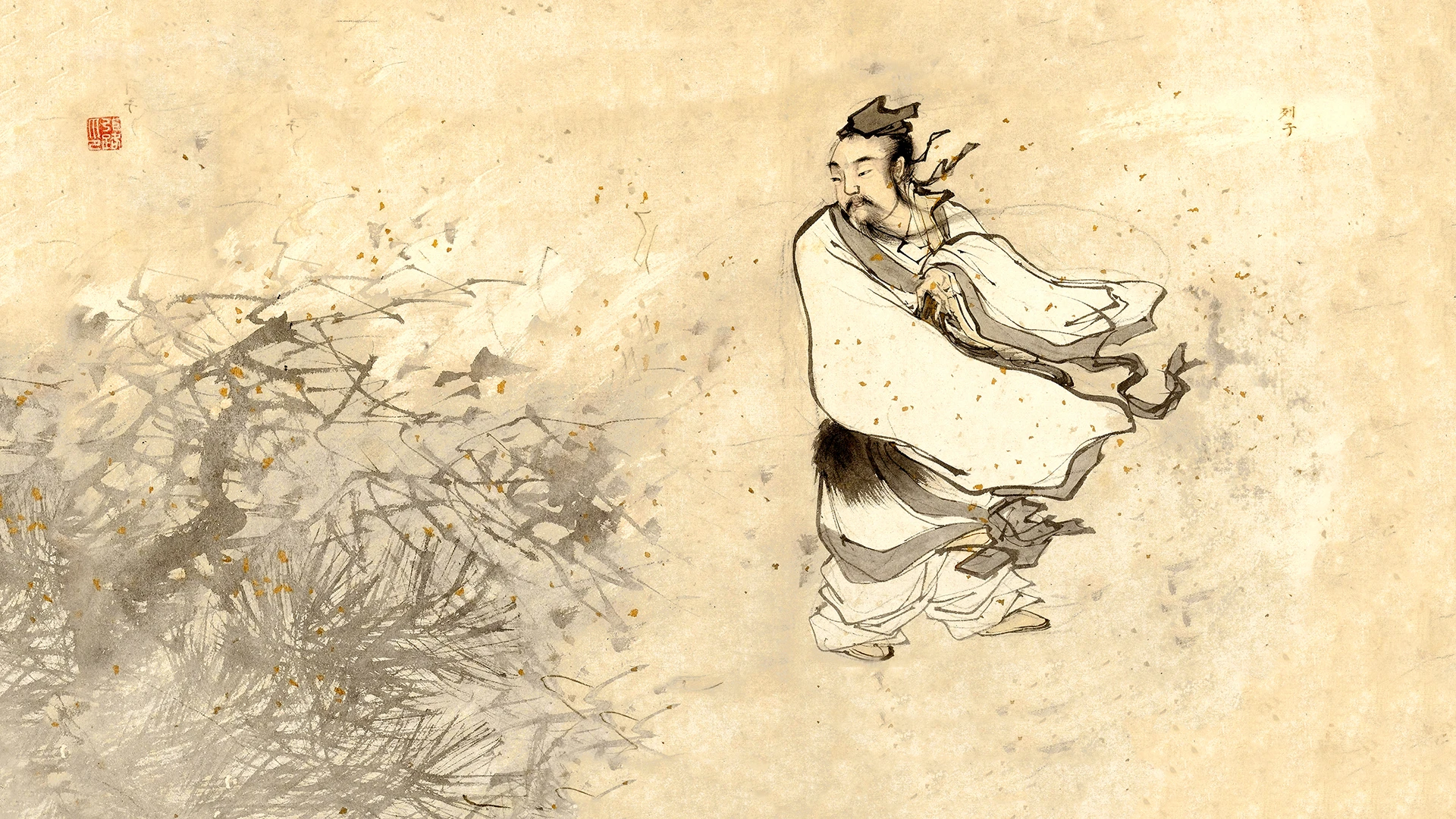

Wuwei (无为) often translated as “non-action,” is a fundamental concept in Taoist philosophy and has an important role in the practice of Tai Chi. While it may sound like doing nothing, wuwei is actually a way of acting without forcing or interfering with natural processes. In this blog post, we will explore the concept of wuwei and its significance in Tai Chi, drawing on the works of ancient Taoist philosophers such as Liezi, Zhuangzi, and Laozi.
At its core, wuwei is about letting go of our ego and allowing things to unfold naturally, without our intervention. It involves being in a state of awareness, so we can respond to situations appropriately without creating resistance or conflict. It’s not about being passive, but rather actively engaging with the world around us in a way that is aligned with the flow of nature.
According to Taoist philosophy, all things arise from the Tao, or the Way, which is the ultimate reality that transcends all dualities. The Tao is not something that can be described in words, but rather something that can be experienced through direct intuition. It is the source of all life and the underlying order of the universe. To live in harmony with the Tao, we must let go of our desires, judgments, and attachments, and allow ourselves to be guided by the natural order of things.
Wuwei is not just a philosophical concept, but a practical one as well. It can be seen in the way we move, breathe, and interact with others. In Tai Chi, wuwei is embodied in the practice of slow, flowing movements that follow the natural rhythms of the body and breath. The goal is not to force the movements or achieve a specific outcome, but rather to allow the movements to emerge spontaneously from within.
To illustrate the concept of wuwei, let’s look at some stories from ancient Taoist philosophers.
The Liezi 1 is a Taoist text that contains many stories and parables illustrating the principle of wuwei. One such example is the story of the woodcarver, which is found in the chapter titled “The Yellow Emperor.”
A woodcarver is described as being a master of his craft. He is able to create beautiful objects out of wood, such as furniture and utensils, with great skill and precision. When asked about his technique, the woodcarver explains that he allows the natural grain and texture of the wood to guide his hand, rather than trying to force it into a particular shape or design.
He says,
“I watch my hands and follow along with the natural grain. I never try to impose my will upon it. Thus, the work is finished effortlessly, without any thought of reward.”
This story illustrates the principle of wuwei as effortless action or non-action. The woodcarver is able to create beautiful objects with ease because he allows the natural flow of the wood to guide his actions, rather than trying to force it into a particular shape or design. This is a key aspect of wuwei, which emphasizes the idea of finding harmony with the natural flow of the universe and acting in a way that is effortless and spontaneous.
In the Zhuangzi 2 there is a story about a man training a fighting cockerel.
There once was a man who wanted his fighting rooster to be more ferocious. He took the rooster to a trainer. In a few weeks’ time he returned and saw that his rooster didn’t squawk as loudly.
“Not ready yet,” said the trainer. Two weeks later he saw that his rooster barely raised his neck feathers and wings.
“Not ready yet,” said the trainer. Another week passed. His rooster looked as tame and docile as a chick.
“You’ve ruined my fine fighting bird!” screamed the man at the trainer.
“Not at all,” the trainer replied, “See how calm and secure he is, how serenely strong he stands today. The other fighting birds take one look at him and they all run away!”
This story illustrates the idea of wuwei as less is more. Rather than making a fuss and drama, calmness and serenity prevails. This is a quality cultivated by the masters of martial arts above all else, to keep your head and avoid panic. To stick to your guns when facing adversity. The other birds cannot fathom the trained bird, they see only nothingness, no fear, no anger, they flee.
An example of Wuwei in the Tao Te Ching 3 by Laozi is in Chapter 17, where it is said:
“The best leaders are those the people hardly know exist. The next best is a leader who is loved and praised. Next comes the one who is feared. The worst one is the leader that is despised.”
This passage suggests that the most effective leaders are those who act with Wuwei, or non-action, by not drawing attention to themselves or forcing their will upon others. Instead, they allow things to unfold naturally and lead by example, without seeking personal glory or control. This way of leading is seen as harmonious and beneficial for both the leader and the people they serve.
Cooking a small fish can also be an example of Wuwei in the Tao Te Ching. In Chapter 64, it is said:
“A kingdom is like a great, low-lying river, The point where all the streams and torrents in the world converge. If you can keep centered and true, The kingdom will be centered and true. With Wuwei, the whole kingdom is refreshed, Without Wuwei, the kingdom becomes weary and oppressed.
Just as a small fish should not be over-handled, The ruler must not over-manage the people with force. In this way, the Tao of Heaven is reflected in the land, And all things flourish without being commanded.”
This passage suggests that just as a small fish should not be over-handled when cooking, a ruler or leader should not try to control or manipulate their people too much. Instead, they should practice Wuwei by allowing things to unfold naturally and trusting in the natural order of things. By doing so, the kingdom will be refreshed and all things will flourish without the need for force or excessive intervention.
Weiwuwei is often associated with the military strategies of Sunzi 4 ,who believed that the best way to win a battle was to achieve one’s objectives without direct confrontation or the use of force.
In “The Art of War,” Sunzi writes,
“The supreme art of war is to subdue the enemy without fighting.”
This quote is often cited as an example of Sun Tzu’s belief in the power of wuwei or “action without action.” Sun Tzu believed that the most effective way to defeat an enemy was not to engage them in direct combat, but rather to use strategy, deception, and other indirect tactics to outmaneuver them avioding conflict.
In another quote from “The Art of War,” Sun Tzu says,
“The wise warrior avoids the battle.”
This quote further emphasizes the idea that true strength lies not in brute force, but in intelligence, strategy, and the ability to avoid unnecessary conflict. By practicing wuwei or “action without action,” Sun Tzu believed that one could achieve victory without resorting to violence or aggression. Soldiers do not want to fight having seen their friends falling in battle and attending their funerals and seeing the sorrow of their wives and children over their lost husband or father, they want to win but they do not want to die, or to have to kill the enemy soldiers of possible. Soldiers generally fight to protect themselves and their comrades and their homeland, they do not fight because they enjoy killing.
In Tai Chi, wuwei is embodied in the practice of slow, flowing movements that follow the natural rhythms of the body and breath. Rather than trying to force the body into a specific position or movement, Tai Chi practitioners allow the movements to arise spontaneously from within. By doing so, they cultivate a deep sense of awareness and sensitivity to the natural flow of energy within the body and the environment.
Through regular practice of Tai Chi, practitioners can develop a sense of ease and relaxation in their movements, which can help reduce stress and promote overall well-being. Tai Chi has been shown to have a range of health benefits, including improving balance, flexibility, and cardiovascular health, as well as reducing symptoms of anxiety and depression.
Research 5 has also shown that Tai Chi can help reduce inflammation in the body, which has been linked to a range of chronic health conditions, including cardiovascular disease, diabetes, and cancer. In one study, participants who practiced Tai Chi regularly for 12 weeks showed a significant reduction in levels of inflammation compared to a control group.
In addition to the physical benefits, Tai Chi also has a meditative aspect, which can help cultivate a sense of inner peace and calm. By focusing on the movements and the breath, practitioners can quiet the mind and enter a state of deep relaxation. This can be particularly beneficial for those who suffer from anxiety or stress-related disorders.
While Tai Chi is a powerful practice for cultivating wuwei, the principles of non-action can be applied to all areas of our lives. By letting go of our ego and allowing things to unfold naturally, we can reduce stress and create a greater sense of harmony and balance.
One way to incorporate wuwei into daily life is to practice mindfulness. Mindfulness involves being fully present in the moment, without judgment or distraction. By cultivating awareness of our thoughts, feelings, and surroundings, we can learn to respond to situations with greater clarity and equanimity.
Another way to cultivate wuwei is to practice surrender. Surrender involves letting go of our attachment to outcomes and allowing things to unfold as they will. Rather than trying to control every aspect of our lives, we can learn to trust in the natural order of things and allow ourselves to be guided by it.
Finally, it’s important to cultivate a sense of playfulness and curiosity in our lives. By approaching situations with a sense of openness and curiosity, we can learn to let go of our expectations and allow ourselves to be surprised by the unexpected.
Wuwei is a fundamental concept in Taoist philosophy and has an important role in the practice of Tai Chi. It involves letting go of our ego and allowing things to unfold naturally, without our intervention. In Tai Chi, wuwei is embodied in the practice of slow, flowing movements that follow the natural rhythms of the body and breath.
Through regular practice of Tai Chi, practitioners can develop a deep sense of awareness and sensitivity to the natural flow of energy within the body and the environment. This can help reduce stress and promote overall well-being, as well as cultivate a sense of inner peace and calm.
While Tai Chi is a powerful practice for cultivating wuwei, the principles of non-action can be applied to all areas of our lives. By letting go of our ego and allowing things to unfold naturally, we can reduce stress and create a greater sense of harmony and balance. By practicing mindfulness, surrender, and playfulness, we can cultivate a greater sense of ease and relaxation in our lives.
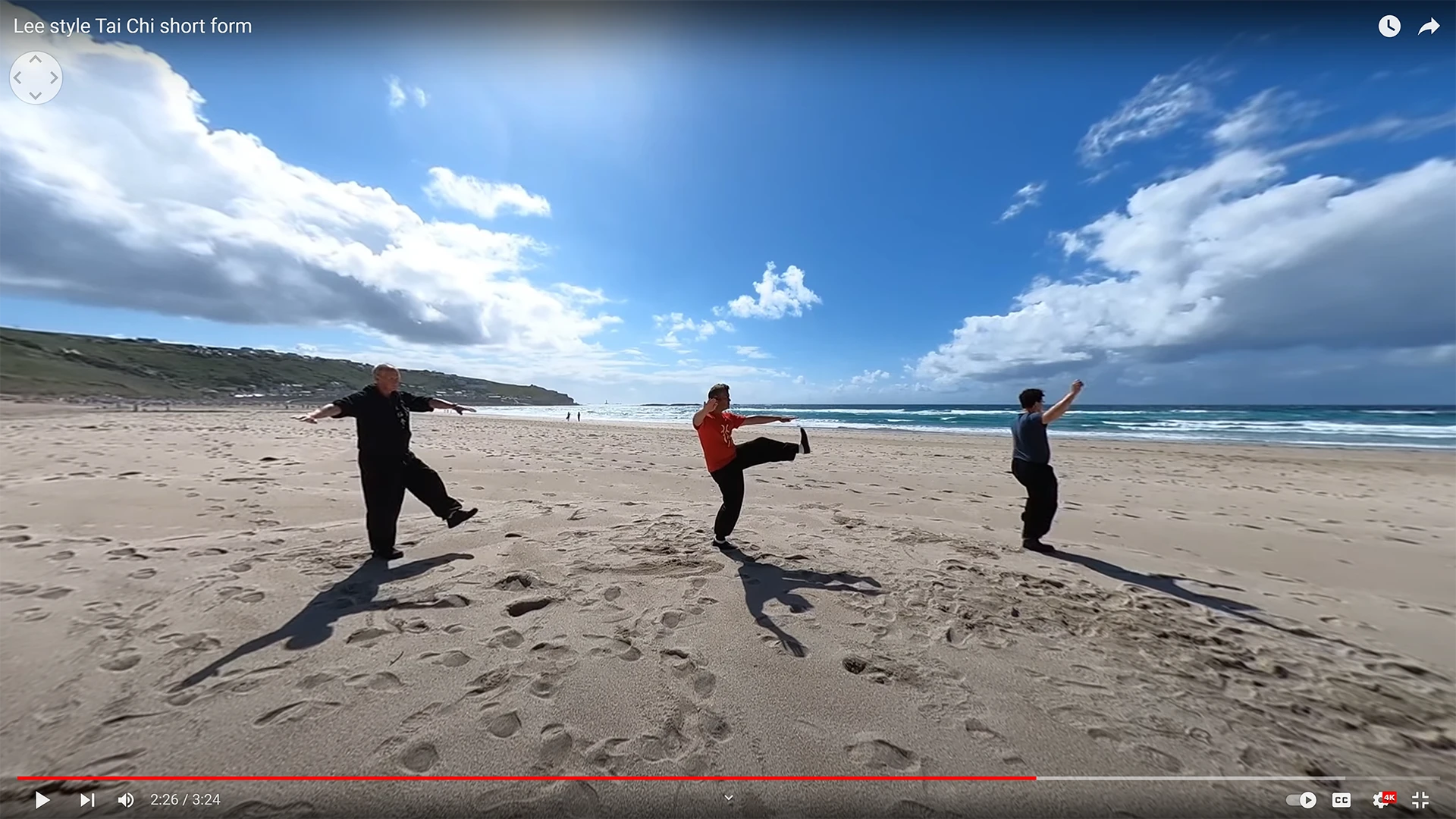
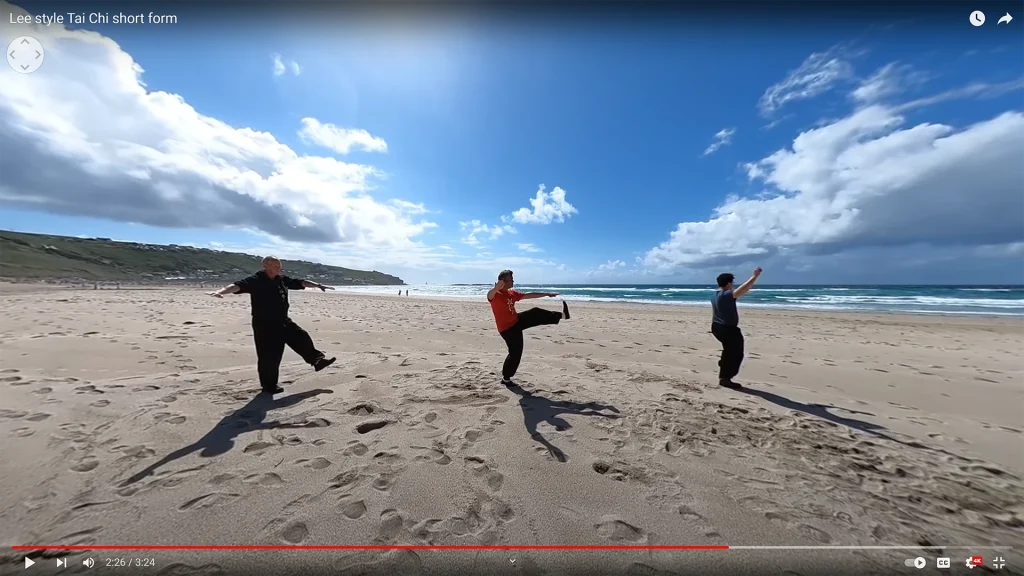
In recent years, Tai Chi has become an increasingly popular form of exercise worldwide, and for good reason. This ancient Chinese practice has been shown to have numerous health benefits, including stress reduction and relaxation. In this blog post, we will explore the science behind these benefits and provide references to peer-reviewed studies from reputable sources in China, around the world, and in the UK.
Tai Chi, also known as Tai Chi Chuan, is a traditional Chinese martial art that involves slow, fluid movements and deep breathing. It was originally developed as a form of self-defense, but over time, it has evolved into a form of exercise that is practiced for health and wellness purposes. Tai Chi is often described as a moving meditation, as it requires focus and concentration to perform the movements correctly.
Stress is a common problem in today’s fast-paced world. It can lead to a variety of physical and mental health problems, including anxiety, depression, and cardiovascular disease. Tai Chi has been shown to be an effective way to reduce stress and promote relaxation, making it a valuable tool for maintaining overall health and wellbeing.
One study conducted in China found that practicing Tai Chi for just 12 weeks resulted in significant reductions in perceived stress and improvements in overall mood among participants 1. Another study conducted in the UK found that Tai Chi was effective in reducing both state and trait anxiety in a group of healthy adults 2.
The calming effects of Tai Chi may be due in part to its focus on deep breathing and relaxation techniques. When we are stressed, our breathing becomes shallow and rapid, which can increase feelings of anxiety and tension. By practicing deep breathing and relaxation techniques, Tai Chi can help to counteract these effects and promote a sense of calm and relaxation.
In addition to its mental health benefits, Tai Chi has also been shown to have numerous physical health benefits. Some of these benefits include improved balance and coordination, increased flexibility and range of motion, and reduced pain and inflammation.
Falls are a common problem among older adults, and they can lead to serious injuries such as hip fractures. Tai Chi has been shown to be an effective way to improve balance and reduce the risk of falls in older adults. One study conducted in China found that a 12-week Tai Chi program resulted in significant improvements in balance and reduced the risk of falls among participants 3.
Tai Chi involves slow, fluid movements that require a wide range of motion. This can help to improve flexibility and range of motion, which is especially important for older adults who may be at risk for mobility problems. One study conducted in the UK found that a 12-week Tai Chi program resulted in significant improvements in flexibility and range of motion among older adults 4
Tai Chi has been shown to be effective in reducing pain and inflammation in a variety of conditions, including osteoarthritis, fibromyalgia, and chronic low back pain. One study conducted in the US found that a 12-week Tai Chi program resulted in significant reductions in pain and stiffness among participants with knee osteoarthritis 5. Another study conducted in Australia found that a 10-week Tai Chi program resulted in significant reductions in pain and improved physical function among participants with fibromyalgia 6.
In conclusion, Tai Chi is a valuable tool for promoting both physical and mental health. Its slow, fluid movements and deep breathing techniques make it an effective way to reduce stress and promote relaxation. Additionally, Tai Chi has been shown to improve balance and coordination, increase flexibility and range of motion, and reduce pain and inflammation in a variety of conditions. If you are looking for a low-impact exercise that is beneficial for both your physical and mental health, Tai Chi may be a great option for you.
It’s important to note that while Tai Chi is generally considered safe for most people, it’s always a good idea to check with your doctor before starting a new exercise program, especially if you have any pre-existing health conditions or concerns.
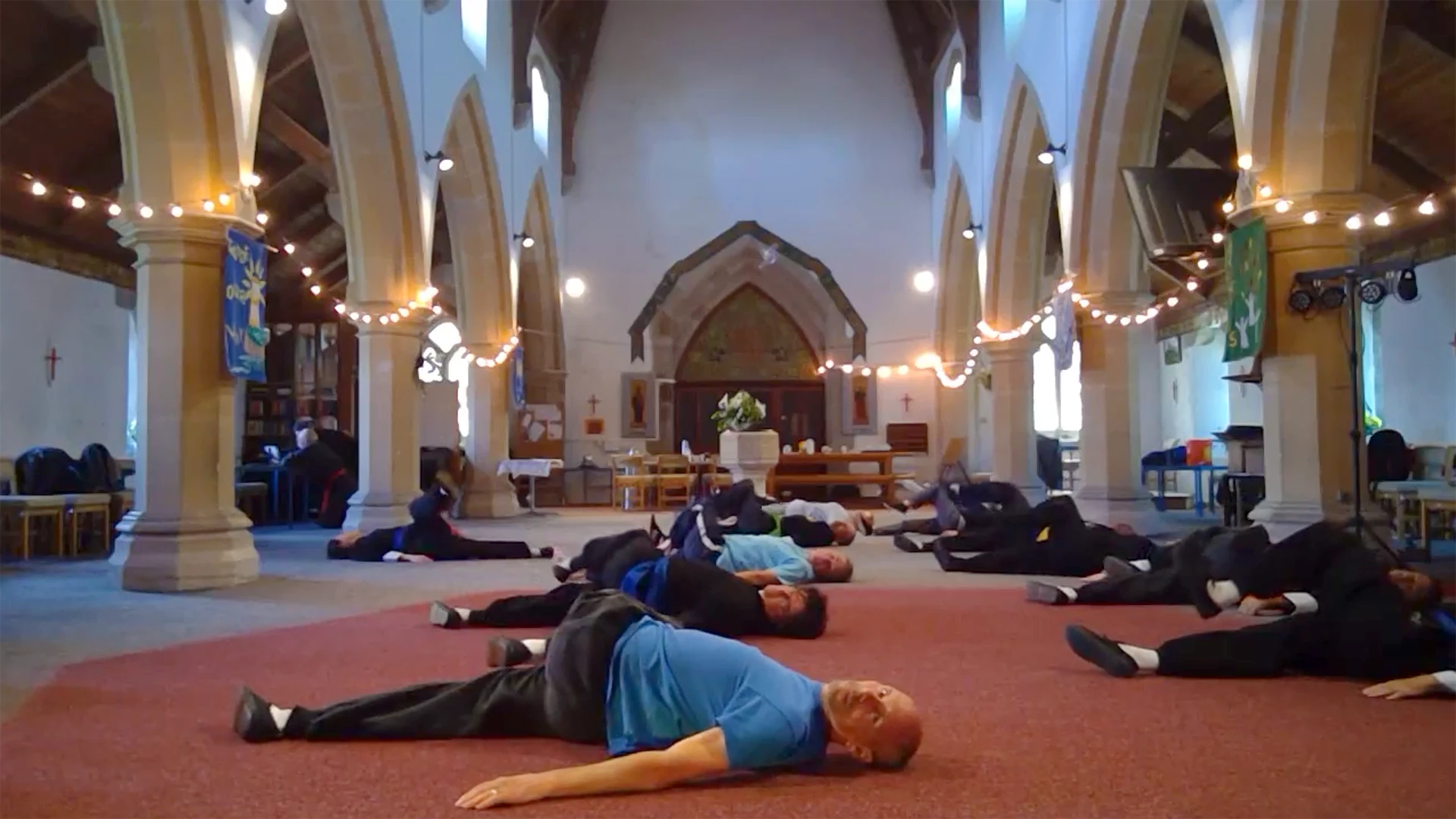
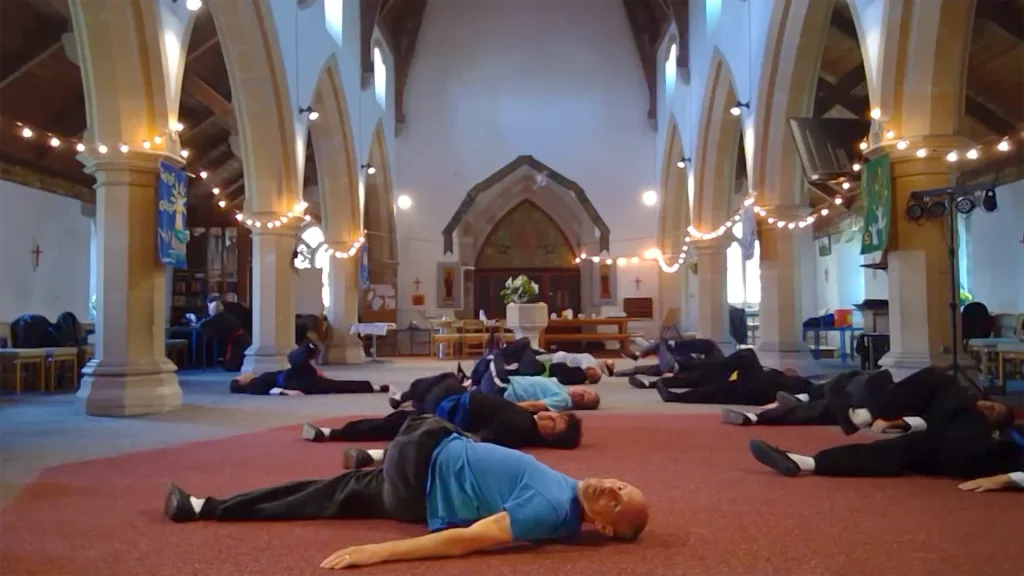
Kai Men Qigong is a series of exercises in Lee-style Tai Chi that emphasizes the principles of Qi, the vital life force in Chinese medicine. In this blog post, we’ll explore what Qi is, how it’s related to Chinese medical principles, why qigong is popular as a health exercise, and how Kai Men Qigong specifically can benefit your health.
Qigong (pronounced “chee-gong”) is an ancient Chinese practice that focuses on cultivating the vital life force or Qi. It involves a series of exercises that are designed to enhance the flow of Qi through the body, promote relaxation, and improve overall health and well-being. Qigong exercises are often gentle and slow and can be performed by people of all ages and fitness levels.
Qi is a fundamental concept in Chinese medicine that refers to the vital life force or energy that animates all living things. It is said to flow through channels or meridians in the body, nourishing the organs and tissues and keeping them healthy. According to Chinese medical principles such as the zangfu theory of internal organs and functions in ancient Chinese medicine, Qi is essential for maintaining health and preventing disease.
Qigong is popular as a health exercise because it can improve overall physical and mental well-being. Regular practice of qigong has been shown to reduce stress, improve balance, flexibility, and coordination, lower blood pressure, and strengthen the immune system. It can also be used as a complementary therapy for various medical conditions, including chronic pain, cancer, and cardiovascular disease.
Qigong works by enhancing the flow of Qi through the body. This is achieved through a series of exercises that involve breathing techniques, movement, and visualization. Qigong exercises are designed to stimulate the flow of Qi through specific channels or meridians in the body, which can help to unblock any areas where the Qi is stagnant or deficient. This, in turn, can help to promote healing and overall well-being.
Kai Men Qigong is a fundamental exercise in Lee-style Tai Chi that focuses on cultivating and enhancing the flow of Qi through the body. It is designed to help students develop sensitivity to Qi, improve relaxation, and promote overall health and well-being. Kai Men Qigong involves a series of exercises that are performed in a standing position and include breathing techniques, movement, and visualization.
Kai Men Qigong has many benefits for the body and mind. It can help to:
In conclusion, Kai Men Qigong is a fundamental exercise in Lee-style Tai Chi that can benefit your overall health and well-being. Qigong as a practice can enhance the flow of Qi through the body, promote relaxation, and improve physical and mental health. It’s a popular exercise because it’s gentle and accessible to people of all ages and fitness levels. If you’re interested in learning more about qigong or trying out Kai Men for yourself, come and join our Lee-style Tai Chi class in Leamington.